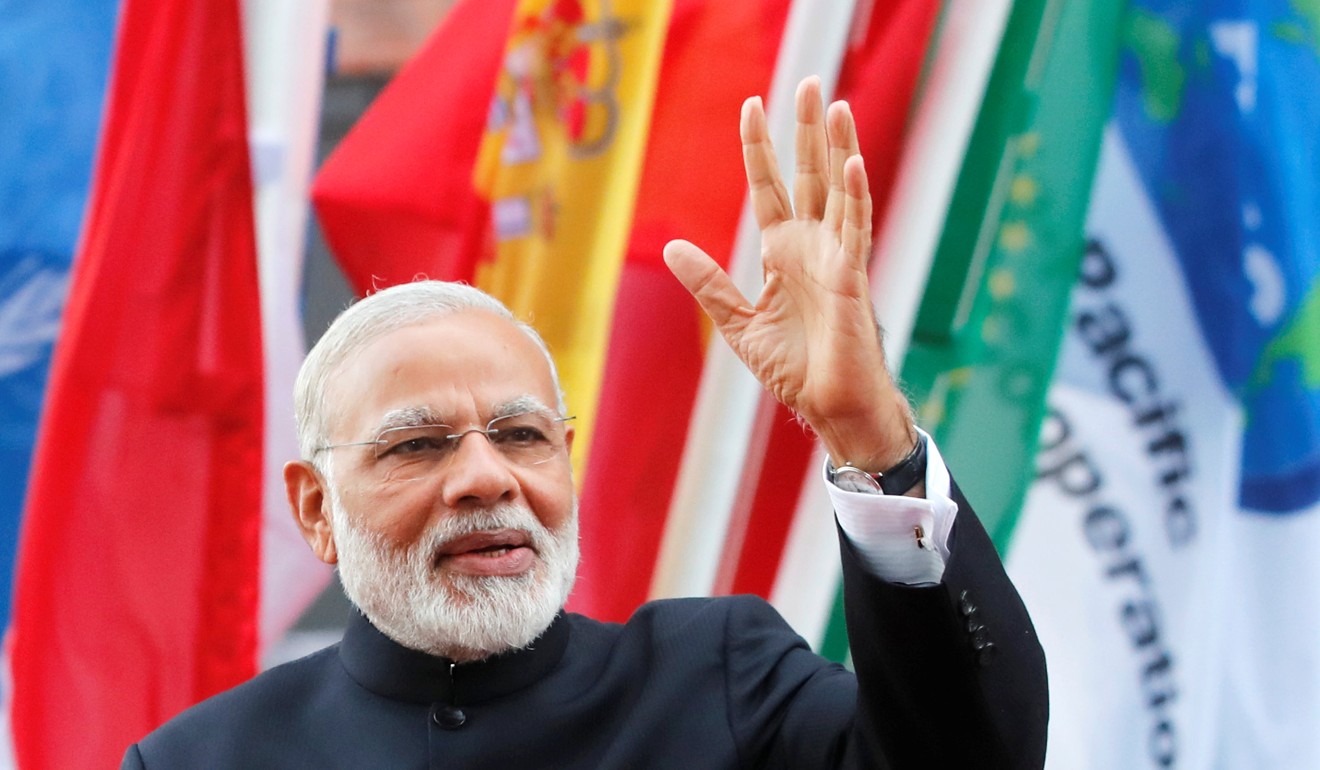
India’s next president will come from marginalised Dalit caste, strengthening Prime Minister Narendra Modi’s re-election bid
Dalit support is even more important for the ruling BJP as it has mostly been shunned by Muslims, who make up about 14 per cent of the population
India’s next president will emerge from the Dalit caste – a community so marginalised they were once known as “untouchables” – with the victory of the ruling party candidate set to strengthen Prime Minister Narendra Modi’s grip on power.
Ram Nath Kovind, 71, is hot favourite to be elected on Monday by national and state lawmakers to become titular head of state as the candidate of Modi’s Bharatiya Janata Party (BJP).
It will be only the second time, after President K.R Narayanan, who served from 1997-2002, that a member of the downtrodden caste has assumed the post.
The result will be announced on Thursday. And for Modi, with one eye on re-election in 2019, it will send an important message to a key, long disdained electoral group.
Dalits, who number around 200 million, are among the poorest communities in India and have traditionally been relegated to activities on the margins of society.
Every [Indian] politician would want support from this 16 per cent voting bloc for any election
Despite legal protection, discrimination is rife and Dalits are routinely denied access to education and other opportunities for advancement.
Analysts claim Modi can win political capital by helping BJP politician Kovind – a former Supreme Court lawyer and former governor of the eastern state of Bihar – to win the contest against opposition nominee Meira Kumar, also a Dalit.
Modi has used Twitter to hail the rise of Kovind, the son of a farmer, from “a humble background”.
Kumar, the daughter of freedom fighter Babu Jagjivan Ram, was a diplomat before entering politics in 1985 and became India’s first woman speaker in 2009, but the electoral college numbers are heavily tilted against her.
Her nomination, which followed Kovind’s, was seen by many as the opposition’s attempt to counter Modi’s move to woo Dalits.
Votes from the Dalits and the BJP’s traditional Hindu base propelled Modi to his 2014 landslide, especially in the battleground states of Uttar Pradesh and Bihar.
“Every [Indian] politician would want support from this 16 per cent voting bloc for any election,” said Vimal Thorat, an activist and convenor of the National Campaign on Dalit Human Rights.
Dalit support is even more important for the BJP as it has mostly been shunned by Muslims, who make up about 14 per cent of the 1.3 billion population.
Dalit votes supplemented by support from the BJP’s right-wing Hindu nationalist followers “will, for once and all, defeat the ‘Muslim veto’ in this country”, said Nistula Hebbar, political editor of The Hindu newspaper.
“Dalits as a community or a base are spread across the country, especially in all electorally important states. Their vote is extremely important, especially for the BJP.”

But reports of clashes and caste discrimination are routine across the country.
Authorities in BJP-ruled Uttar Pradesh state sent riot police to Saharanpur district in May after clashes between Dalits and upper caste Hindus.
Violent protests erupted in Modi’s home state Gujarat last year after video footage emerged of an attack on four Dalit villagers who were taking a dead cow to be skinned.
Cows are considered sacred by Hindus and attacks by vigilante groups on cow traders and smugglers have increased since Modi’s election.
The increasing friction between upper and lower castes in states like Gujarat, Maharashtra and UP has led to the rise of a young and oppositional Dalit leadership
Dalits are commonly tasked with jobs such as skinning cattle carcasses for their hides and the incidents have flagged inherent tensions between the BJP’s traditional base and its bid to reach out to lower-caste voters.
“The increasing friction between upper and lower castes in states like Gujarat, Maharashtra and UP has led to the rise of a young and oppositional Dalit leadership,” a Times of India editorial said last month.
It added that Modi and his allies have “sought to regain advantage in this equation with a Dalit presidential candidate”.
Ashok Malik of the New Delhi-based Observer Research Foundation think tank said Kovind’s nomination was “a milestone” for the BJP, which “is at its strongest ever” and poised to elect its choice of president even without any support from opposition lawmakers.
But Dalits wonder whether the election of a president from their community – for the second time in two decades – will bring real change.
“Change will happen only when the everyday problems of the community are addressed in line with our constitution. When they are given justice and the rules are implemented fairly and firmly,” Thorat said.
India’s prime minister wields most of the executive power, but the president can send back some parliamentary bills for reconsideration and also plays a guiding role in the process of forming governments.
In his three years in power, Modi has shown himself to be an astute politician. The response to his latest political gambit, particularly by India’s marginalised groups, will play a key role in deciding his future after 2019, experts say.

.png?itok=arIb17P0)